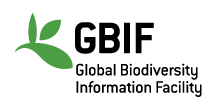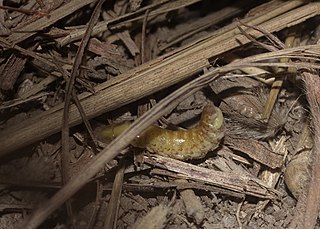
The Global Biodiversity Information Facility (GBIF) is an international organisation that focuses on making scientific data on biodiversity available via the Internet using web services. The data are provided by many institutions from around the world; GBIF's information architecture makes these data accessible and searchable through a single portal. Data available through the GBIF portal are primarily distribution data on plants, animals, fungi, and microbes for the world, and scientific names data.

The Rhagophthalmidae are a family of beetles within the superfamily Elateroidea. Members of this beetle family have bioluminescent organs on the larvae, and sometimes adults, and are closely related to the Phengodidae, though historically they have been often treated as a subfamily of Lampyridae, or as related to that family. Some recent evidence suggested that they were the sister group to the Phengodidae, and somewhat distantly related to Lampyridae, whose sister taxon was Cantharidae, but more reliable genome-based phylogenetics placed as the sister group to the Lampyridae.

Doidae is a small family of Lepidoptera with an exclusively New World distribution, with species occurring in Central America, the south-western United States, and northern South America.
The Catalogue of Life is an online database that provides an index of known species of animals, plants, fungi, and microorganisms. It was created in 2001 as a partnership between the global Species 2000 and the American Integrated Taxonomic Information System. The Catalogue is used by research scientists, citizen scientists, educators, and policy makers. The Catalogue is also used by the Biodiversity Heritage Library, the Barcode of Life Data System, Encyclopedia of Life, and the Global Biodiversity Information Facility. The Catalogue currently compiles data from 165 peer-reviewed taxonomic databases that are maintained by specialist institutions around the world. As of September 2022, the COL Checklist lists 2,067,951 of the world's 2.2m extant species known to taxonomists on the planet at present time.

Peucedanum is a genus of flowering plant in the carrot family, Apiaceae. Peucedanum boasts a global presence with diverse spread of morphological features. Peucedanum species are characterized by dorsally compressed mericarps, slightly prominent dorsal ribs, narrowly winged lateral ribs, and a broad commissure. However, the vast diversity of morphology, fruit forms, and phytochemical production makes classifying species in the Peucedanum challenging. Historically relevant in traditional medicine, Peucedanum's taxonomic complexity arises from its extensive diversity.
Diploptalis is a genus of moths of the family Crambidae. It contains only one species, Diploptalis metallescens, which is found in Nigeria.
Asplenia melanodonta is the only species in the monotypic moth genus Asplenia of the family Noctuidae. The species is found in Africa. Both the genus and the species were first described by George Hampson, the genus in 1916 and the species in 1896.

Pseudometa is a genus of moths in the family Lasiocampidae. The genus was erected by Per Olof Christopher Aurivillius in 1901. The Global Biodiversity Information Facility gives this genus name as a synonym of the spider genus Chrysometa.
Helochelys is an extinct genus of stem turtle known from the Late Cretaceous (Cenomanian) of southern Germany.
Ayesha is a genus of cicadas in the family Cicadidae. There is only one described species, Ayesha serva.
Labrostochelys is an extinct genus of bothremydid pleurodiran turtle that was discovered in the Ouled Abdoun Basin, Morocco. The genus consists solely of type species L. galkini.
Dorylaimus is a genus of Dorylaimidae.
Hydromermis is a genus of Mermithidae.
Cyclocypris is a genus of ostracods in the family Candonidae. The genus has a cosmopolitan distribution.
Chromadorina is a genus of nematodes belonging to the family Chromadoridae.

Collotheca is a genus of rotifers belonging to the family Collothecidae.
Combocerus is a genus of beetles belonging to the family Erotylidae. Its only species is Combocerus glaber.

Conochilus is a genus of rotifers belonging to the family Conochilidae.
Cellaria is a genus of bryozoans belonging to the family Cellariidae.







